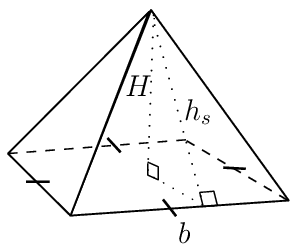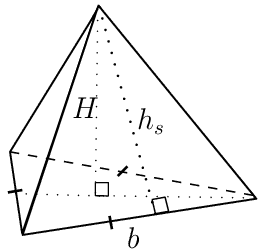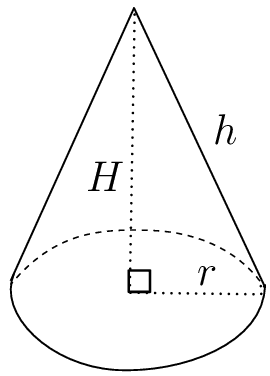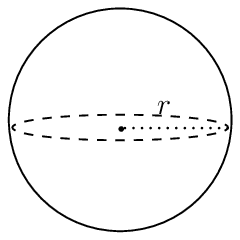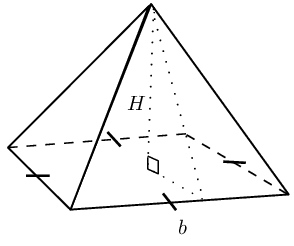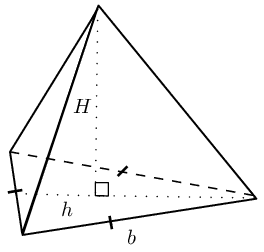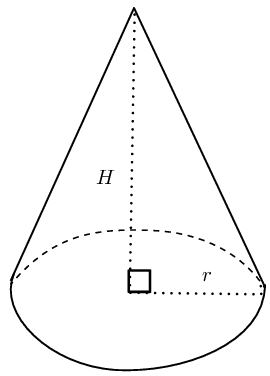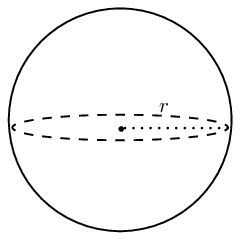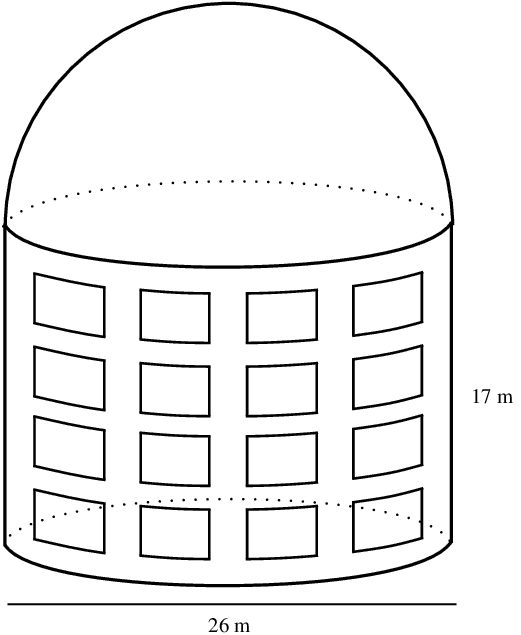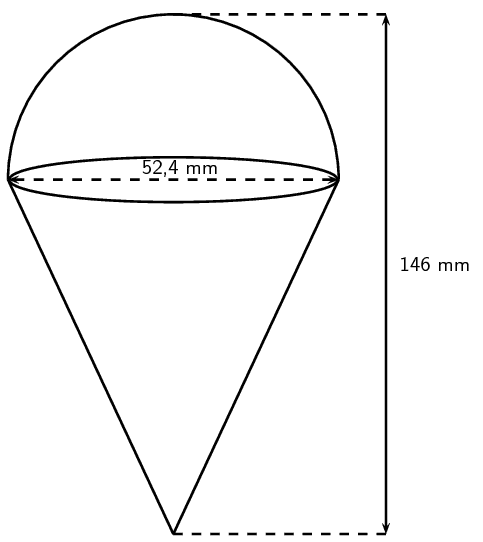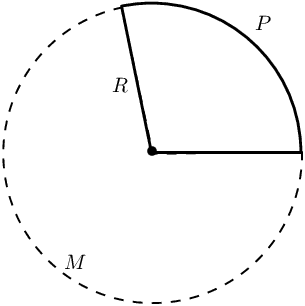Calculate the surface area of the ice-cream and the cone.
\begin{align*}
\text{Radius }&=\frac{\text{52,4}}{2} \\
&=\text{26,2}\text{ mm} \\
\text{Height of cone }&= 146 - \text{26,2} \\
&=\text{119,8}\text{ mm}
\end{align*}
The surface area of the ice-cream is half a sphere:
\begin{align*}
\text{Surface area ice-cream:} &=\dfrac{1}{2}(4 \pi r^{2}) \\
&= \dfrac{1}{2}(4 \times \pi \times (26,2)^{2}) \\
&\approx \text{4313,03 mm}^{2}
\end{align*}
The surface area of the cone must not include the surface area of the circular face.
\begin{align*}
\text{Surface area cone }&= \pi r(r + \sqrt{h^{2} + r^{2}}) - \pi r^{2} \\
&= \pi \times \text{26,2} \times (\text{26,2}+\sqrt{(119,8)^{2} + (26,2)^{2}}) - \pi \times
(26,2)^{2} \\
&\approx \text{10093,76 mm}^{2} \\
\therefore \text{Surface area ice-cream and cone} &= \text{4313,03} + \text{10093,76} \\
&=\text{14406,79 mm}^{2} \\
&\approx \text{144,07}\text{ cm$^{2}$}
\end{align*}
Calculate the total volume of the ice-cream and the cone.
\begin{align*}
\text{Volume}&=\text{volume(cone)}+\text{volume}(\frac{1}{2}\text{sphere}) \\
&=\frac{1}{3}\pi r^2h+\frac{1}{2}\left(\frac{4}{3}\pi r^3\right) \\
&=\frac{1}{3}\pi(\text{26,2})^2\times\text{119,8}+\frac{2}{3}\pi(\text{26,2})^3 \\
&=\text{86 116,82}\ldots +\text{37 667,12}\ldots \\
&=\text{123 783,953}\ldots \text{ mm$^{3}$} \\
&\approx\text{124}\text{ cm$^{3}$}
\end{align*}
How many ice-cream cones can be made from a \(\text{5}\) \(\text{ℓ}\) tub of ice-cream (assume
the cone is completely filled with ice-cream)?
\begin{align*}
\text{1 000}\text{ cm$^{3}$}&=\text{1}\text{ ℓ} \\
\therefore \text{5}\text{ ℓ}&= \text{5 000}\text{ cm$^{3}$}\\
\therefore \frac{\text{5 000}}{124} &\approx 40 \text{ cones}
\end{align*}
Determine the value of \(R\).
\(R\) is the slant height.
\begin{align*}
R &= \sqrt{r^{2} + h^{2}} \\
&= \sqrt{(\text{26,2})^{2} + (\text{119,8})^{2}} \\
&= \text{122,631}\ldots\text{ mm} \\
&\approx \text{123}\text{ mm}
\end{align*}
Calculate the length of arc \(P\).
\begin{align*}
P &=\text{circumference of cone} \\
& = 2\pi(\text{26,2}) \\
&\approx \text{165}\text{ mm}
\end{align*}
Determine the length of arc \(M\).
\begin{align*}
M&=2\pi(123)-165\\
&=\text{608}\text{ mm}
\end{align*}


